History has seen the rise and fall of some infamous and notorious rulers who brought about inexplicable horror in their thirst for power and recognition. They ruled with an unchallenged authority and silenced all possible threats in the most ruthless manner.
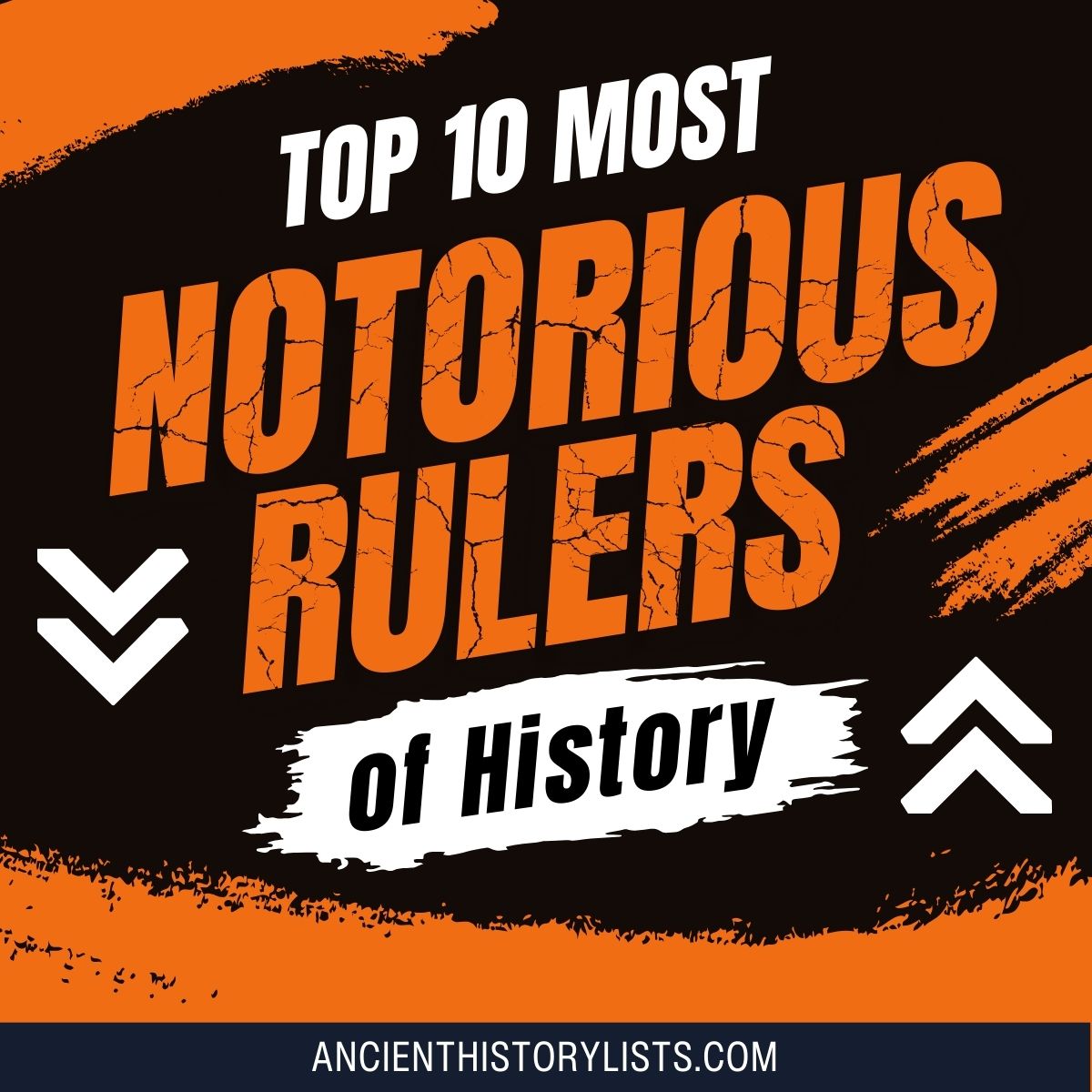
Now, the idea of an insane ruler with absolute power and control over his/her people may sound both unnerving and fascinating at the same time. However, back in ancient times, almost every major civilization routinely saw the ascension of notorious kings and queens to the throne, and these infamous names went down in history.
Here is a list of the top 10 notorious rulers in history:
10. Commodus (Roman Emperor)
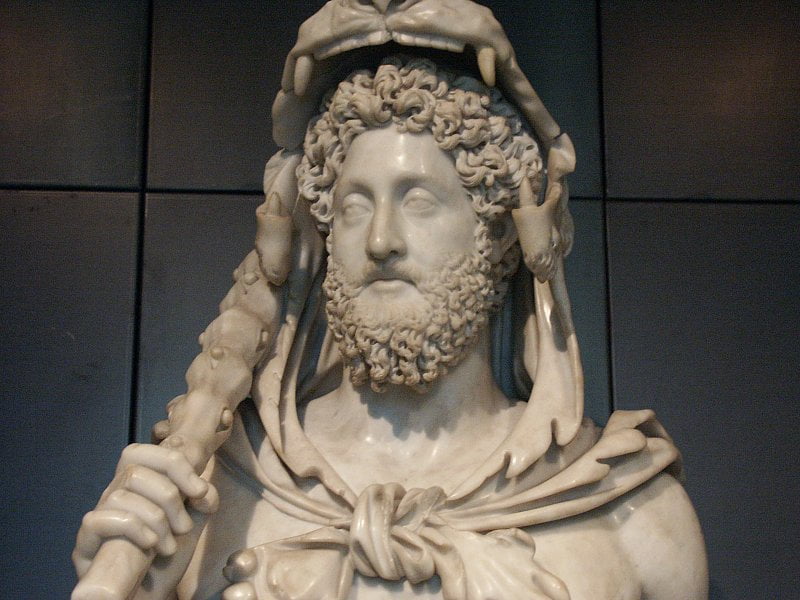
Commodus was a famous or rather infamous Roman emperor who was absolutely despised by his people for his outrageous behavior throughout his rule. He proclaimed himself to be the reincarnation of the mighty Hercules, and would openly participate in gladiator battles.
Back in those days, gladiators enjoyed huge fame among the common people, but upper-class Romans considered their fights a mere spectacle in which lower-class slaves participated. When Commodus started to openly participate in gladiator fights, it angered many people. On top of this, his fights were never fair, and he would fight injured gladiators or maimed animals in order to show off his skills.
When he became Emperor of Rome, he had some pretty big shoes to fill. His father, Marcus Aurelius, was much revered by the Romans and history would have gladly forgiven Commodus for not living up to such high standards. But he failed to become a great emperor in every possible way.
He also turned out to be a vain ruler who had no respect for his own people. His laughable displays of manliness only garnered disgust in the Roman Senate and among the general public. Today we remember him for his colossal ego and unspeakable cruelty.
9. Attila the Hun (Ruler of the Huns)
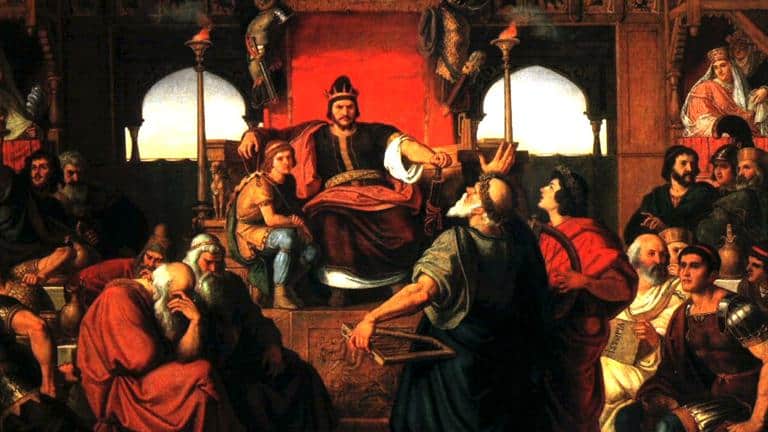
The Huns were a resounding force with fierce warriors that gave the Roman Empire a good deal of trouble from around the first century AD. Showing up in the declining centuries of the Roman Empire, they routinely struck terror into the hearts of the common people.
Attila the Hun single-handedly wreaked more havoc than all his predecessors combined. He became the leader of the Huns in 434 AD and over the next 10 years, he led multiple invasions and succeeded in capturing territories that encompassed modern-day Hungary, Spain, Greece, and Italy.
Attila was a skilled horseman and a tactical military leader. His authority remained unchallenged throughout his rule and in time, he turned the Huns into a lethal fighting force. He would often rampage through enemy colonies, burning down or capturing towns, and killing every single civilian occupant.
In Italy, he caused such destruction that the entire city of Aquileia was brought to its knees. He had trained his men to be absolutely ruthless towards their enemies to the extent that they completely decimated the city. When they were done, it was not possible to tell where Aquileia had once stood.
8. Nero (Roman Emperor)
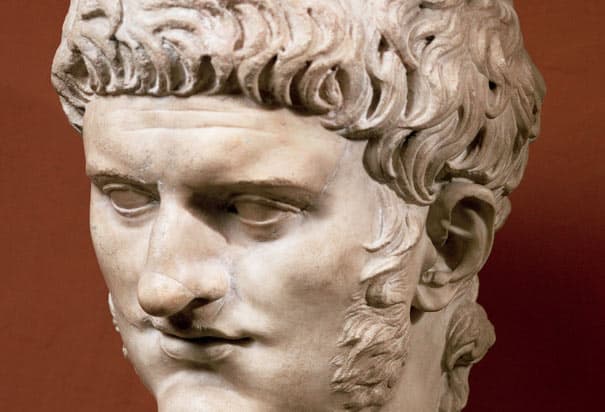
If you are well acquainted with ancient Roman history, you have probably guessed that there are going to be quite a few Roman emperors on this list. Nero was one of the most infamous of Rome’s emperors. History remembers him today as a madman with absolute power, a ruler who indulged in frequent debauchery and hated Christians.
Apart from being a thorn in the side of the common people, he is also known to have murdered his own mother Agrippina and his wives, Octavia and Poppaea Sabina. And then there is the story of how he started a great fire in Rome so that he could build a new city center with a brand-new palace for himself. When the monstrous fire eventually died out after engulfing much of the city, the first thing he did was to build himself a brand-new palace.
See also:
Top 10 Famous People of Ancient Rome
7. Fu Sheng (Ancient China)
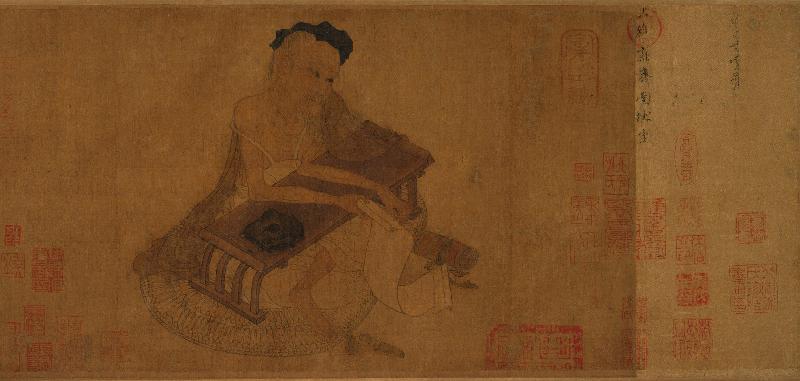
Fu Sheng was an infamous emperor of the Qin dynasty who ruled for only two years during the period of the Dong Jin dynasty (317-420 AD). But these two years’ worth of lunacy and unprecedented pride were enough to send him to his death at the hands of his own family members.
He was blind in one eye and legend says that he lost that eye when an eagle viciously poked it out while he was trying to steal its eggs. When he came to power, he decreed that using words such as “without,” “devoid,” or “lacking” was taboo and punishable by death.
His true notoriety came to light when he began executing important government officials just because he felt like it. Along with his bloodthirsty nature, he also possessed a noticeable physical strength and brute force which made him a formidable adversary in battle.
A heavy drinker, he was known to be perpetually drunk and would make important state decisions while under the influence of alcohol.
6. Emperor Yang of Sui (Ancient China)
Yang of Sui was the second emperor of the Sui dynasty and he reigned in mainland China. Even his ascension to the throne is mired in controversy as many historians say he murdered his own father to become the new emperor.
Once he ascended the throne, he directed many of the dynasty’s coffers into completing significantly large and unnecessary architectural projects. Being one of the most self-indulgent tyrants in history, he showed total disregard for the condition of the poor peasants and the common people.
He imposed excessive taxes on the general public to fund his projects such as the reconstruction of the Great Wall of China, the construction of the Grand Canal and the refurbishing of the entire eastern capital of Luoyang.
Such behemoth construction projects required an unprecedented amount of manpower and Yang forced around eight million people into labor to complete them. Consequently, there were many uprisings against the rampant carelessness of Yang’s government and in the end he hung himself.
5. Vlad the Impaler (Ottoman Empire)
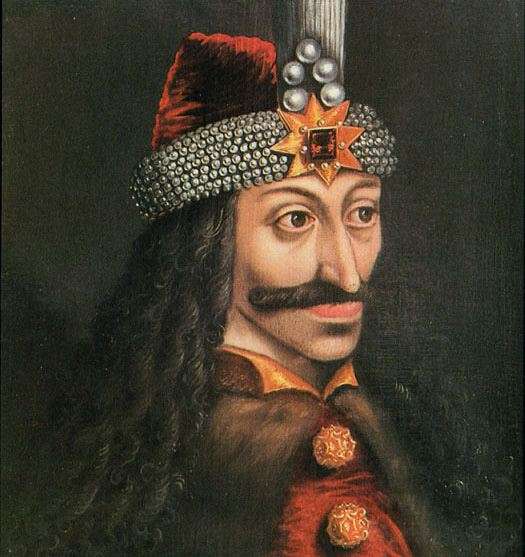
We have heard much about the cinematic Dracula, but only a few know that his character was inspired by a real-life person. Vlad the Impaler, as the name suggests, was known to kill his enemies by impaling their bodies on blunt stakes.
He spent much of his life avenging the murder of his father and older brother, a mission he executed without mercy. He never gave his enemies a quick death. They would die slowly in excruciating pain inflicted by stakes that would pierce through their abdomens and chests. And here is the catch, no matter what felony you committed – a murder, or just stealing some bread – death by impalement was the only punishment.
The tales of his notoriety don’t end there. At one time, there was great sickness among the locals living in the city of Tirgoviste (then capital of Vlad’s empire, Wallachia). Vlad the Impaler decided to address the situation and clean up the diseased streets. He invited all the sick and poor to one of his castles for a great feast.
Once everyone was done, Vlad quietly excused himself, locked the entire place from the outside and then burned it to the ground while everyone was still inside. Unlike Bram Stocker’s Dracula, he did not suck the blood out of his victims’ necks. Eating breadcrumbs dipped in their blood was more his style.
4. Ivan IV the Terrible
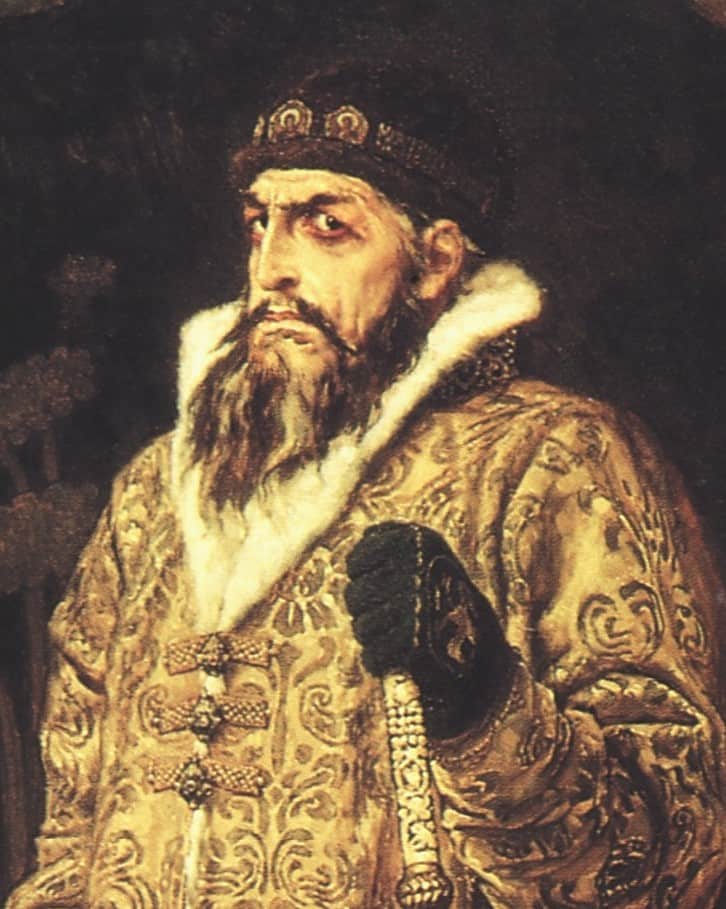
A number of Russian tsars could have made it on to this list, but the first tsar of them all, Ivan the Fourth, gets a place in the top five for his sheer notoriety. Yes, he played a pivotal role in creating a central, more stable Russia, but he is also known for his frequent violent outbursts that led to dire consequences on multiple occasions.
Things started going south when his first wife died in 1560. He fell into depression and his paranoia increased. He was convinced that the aristocratic boyars had conspired to murder his beloved wife.
For the next 24 years, he ruled with absolute power, brought about the brutal end of his enemies, and terrorized the living daylights out of the general public on a regular basis. At one time, he became annoyed at the apparent insolence of his eldest son. In a fit of rage, he killed him on the spot by hitting him on the head with a 30-pound iron bar.
Things did not end well for his other sons either. The middle one was mentally challenged, and the third son died mysteriously at a very young age. During his reign, this cold corner of Russia did grow into a powerful empire, but Ivan’s only legacy remains the moniker he earned from his dastardly acts.
3. Herod
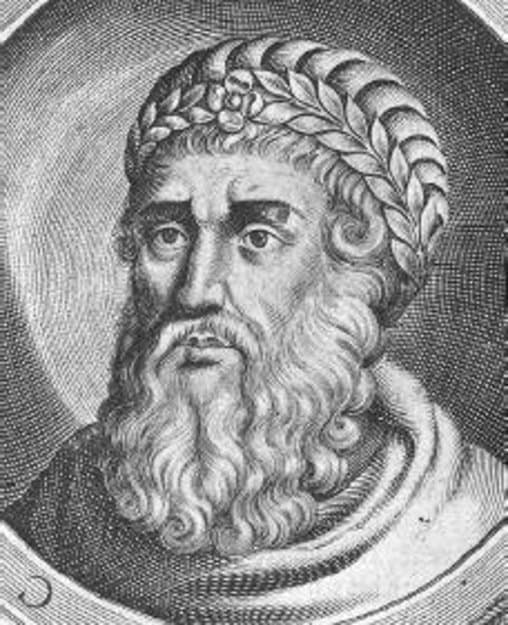
Herod is generally portrayed as an insane megalomaniac in the Bible – a heartless paranoid who wanted to kill Jesus and other innocent members of the public. Herod did commit some notorious atrocities, but this depiction is unfairly biased against him, particularly given the fact that he was a devoted pagan.
He saw himself as a savior of pagan patrons, and a protector of Jews in Palestine and beyond during his reign from 37 BC to 4 BC. That being said, as he grew older, the darker side of his personality became more apparent.
The growing deception and mistrust in his own family only added to his mental instability. His sister Salome in particular made good use of his condition, poisoning his mind against his own family.
He ended up killing his own beloved wife, Mariamne, along with her two sons and other members of her family. Things only got worse in his dying years when he became completely unhinged and ordered the mass murder of infants in Bethlehem. Among all this disorder, he unsuccessfully tried to commit suicide and finally died in 4 BC from a prolonged illness.
2. Caligula
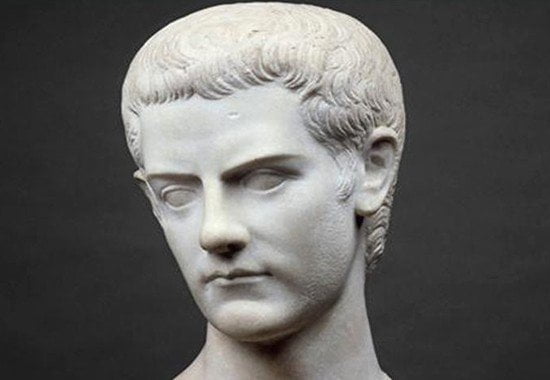
Just when you thought Nero was as bad as it could get, Caligula went beyond the known realms of notoriety by bringing about unparalleled carnage in only four years of rule. It is an irony that when he became emperor in 37 AD, the Romans sighed with relief since it was the end of Tiberius’ reign.
His first six months in power could not have been better. He brought about popular reforms and freed civilians who were unjustly imprisoned by Tiberius. Right around the six-month mark, though, he became severely ill and when he recovered in October of 37 AD, he wasn’t the same person.
One by one, his weird antics increased. First, he ditched regular togas and began to wear feminine dresses like silken gowns. In his absolute madness, he declared himself a living god and had a bridge built between his palace and the temple of Jupiter, so that he could make regular consultations with the deity.
He even tried to appoint his horse Incitatus as a consul to the Senate. Whoever voiced their objections against this lunacy had to face dire consequences. He was clinical in finishing off his rivals and even forced parents to witness the execution of their own children. Rome had had enough. On January 24, 41 AD, he was assassinated by a group of guardsmen who stabbed him to death.
1. Genghis Khan
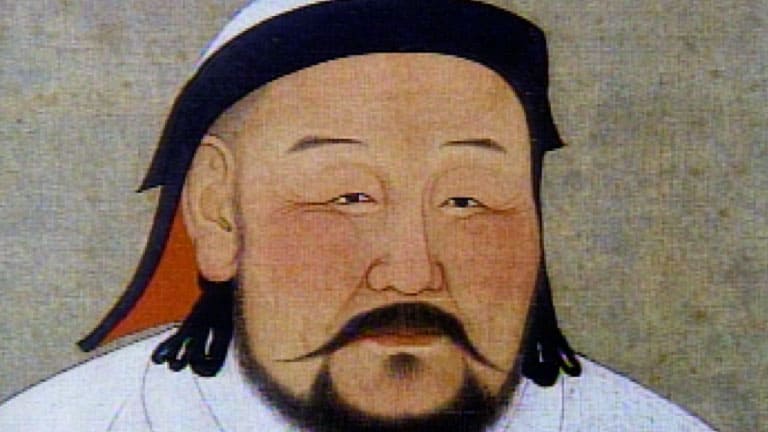
Born under the name of Temujin, Genghis Khan was a Mongolian warrior and ruler who went on to create the largest empire in the world – the Mongol Empire. From 1206 to 1227, for 21 years, his troops marauded through northeast Asia destroying any tribes that got in their way and conquering nearly 12 million square miles (31 million square kilometers) of land.
Genghis Khan was ruthless in his expansion. He created a bloodbath that swept through Asia and Europe, leaving behind millions of dead. As gory as this unprecedented expansion was, he did successfully modernize the Mongolian culture that had now spread well beyond its original borders. He was also known to be tolerant of other religions and gave full religious freedom to everyone in his empire as long as they paid him taxes.
He was generous to all his allies but remained terrifying to his enemies. If anyone betrayed him or was disloyal, he would not only kill them, but also anyone connected to them. One cannot quite comprehend the exact number of people Genghis Khan killed during his extended conquests in Asia and Europe, but historians put the count somewhere between 38 and 40 million.
In fact, evidence shows that during the period of his conquest in mainland China, the native Chinese population declined by millions. Modern historians also claim that he may have devastated around three-quarters of contemporary Iran’s population during the war between the Mongols and the Khwarezmid Empire. In fact, the Mongol expansion might actually have reduced the world population by about 11 percent.
Conclusion
Since society began, human history has witnessed both the good and bad aspects of human nature. There have been many infamous people who displayed a particular penchant for being the physical manifestation of evil. Today, we remember them not for the good they did (some of these in fact brought about positive changes), but for the despicable deeds they carried out to remain in power. They did not hesitate in torturing and killing innocent people as long as it furthered their personal cause.
Hi, men, there is a big mistake. Herod could not be a pagan, he was a Jewish King, who was totally loyal to the Jewish Law, otherwise ,kohens, or a Cohen-gadol, who were servants and teachers of monotheism, would not follow his orders, and moreover the population of ancient Israel under the Roman occupation was mostly consisted from Jews,with strong religious and national values, namely Zealots. Sure, he was mad and his behaviour was unacceptable from the rabbanim( rabbis), however, he tried to increase the influence of Roman Culture, but it did not affected much the group of principles, such as being Jewish in terms of The Holy Torah, as well as you know, he also reconstructed The Temple for Jewish purposes, not Idolators. And the last thing that can not allow to call him Idolator-his father and his legacy were Idumaeans who were converted to Judaism. The Jewish and Roman sources had not mentioned Idolatry in Israel while Jesus was acting. Who were his teachers? Ask this logical question. Only Romans were the biggest congregation of idolators in Israel as Roman soldiers or staff. Please, be accurate with religious and cultural aspects, please.
Vlad the Impaler was the rules of Wallahia not the Ottoman Empire. And Ghengis Han was actually pretty good with the people he conquered.
Vlad the Impaler fought against the Ottomans. Also Herod was not Jewish, he ruled over that Jewish population for Rome. He was Roman.
How do you not have Timur on this list? Killed more than 17 million people during his conquests and destroyed religious and cultures. Much worse then Genghis Khan.
Genghis killed an estimated 40 million and amassed a large amount of land quickly, furthermore he continued his bloodline to the point where 1 in 4 mongols are related to him. Given that, how is he Timur worse than him?
What about suleyman the magnificent ruling over three continent
How can you guys s forget Osman ghazi the founder of ottoman empire,defeated the Byzantine empire,mongols and also made a very strong base of his empire.